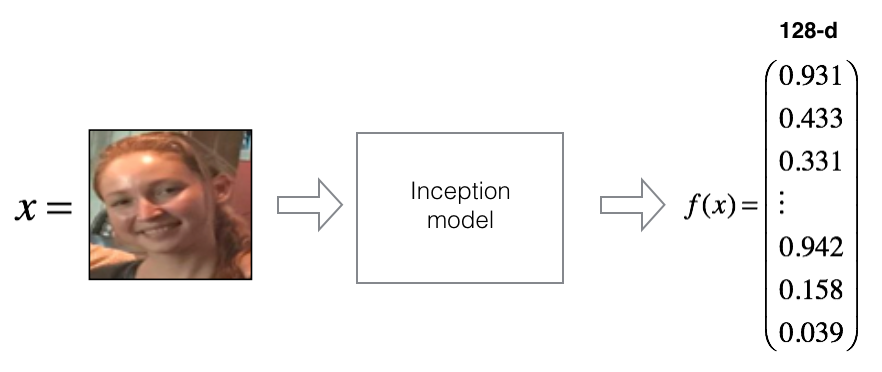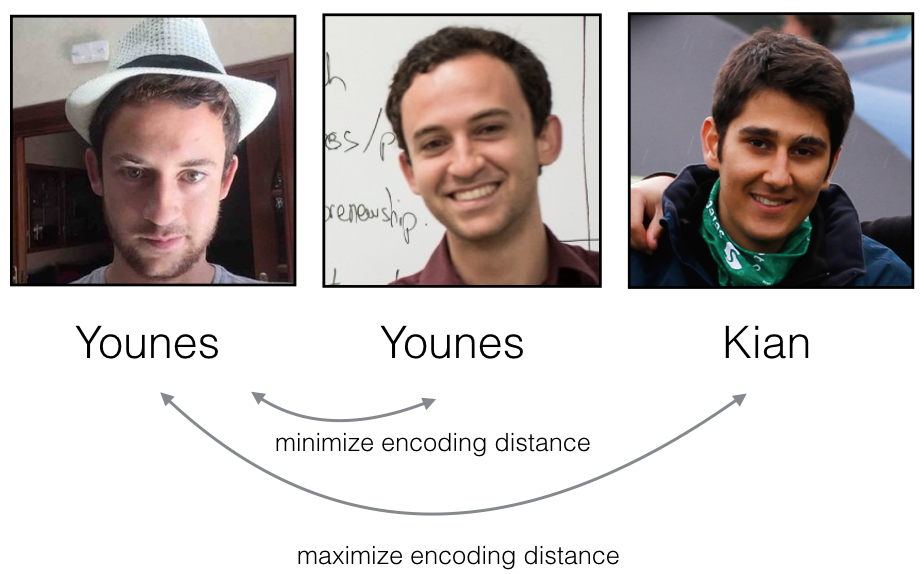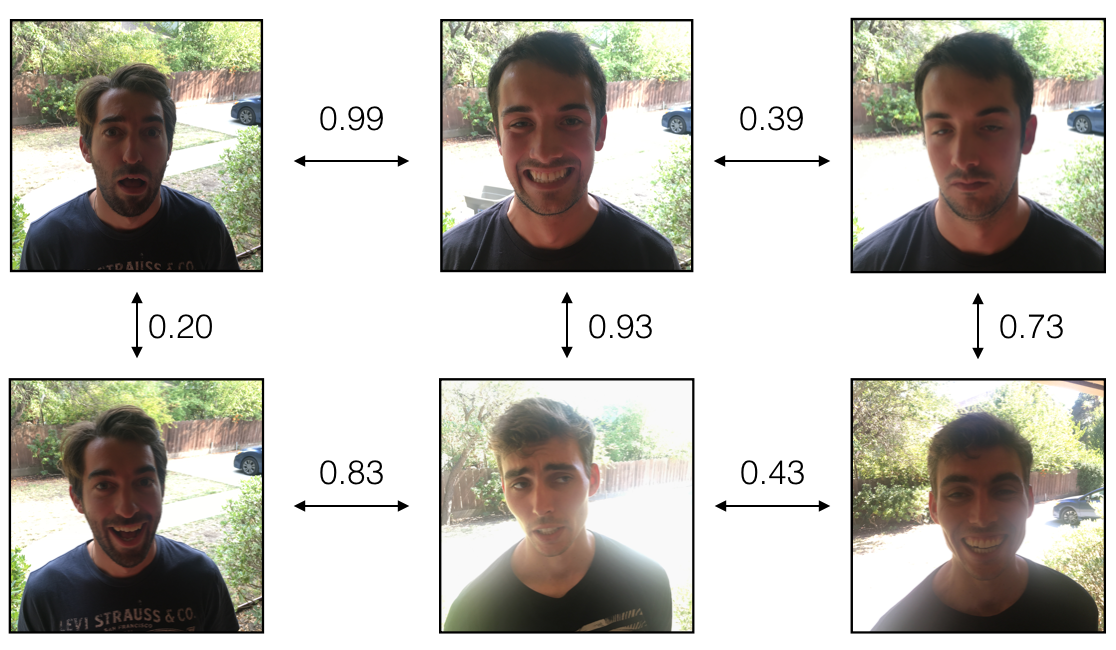1.2 - The Triplet Loss¶
For an image $x$, we denote its encoding $f(x)$, where $f$ is the function computed by the neural network.

Training will use triplets of images $(A, P, N)$:
- A is an "Anchor" image--a picture of a person.
- P is a "Positive" image--a picture of the same person as the Anchor image.
- N is a "Negative" image--a picture of a different person than the Anchor image.
These triplets are picked from our training dataset. We will write $(A^{(i)}, P^{(i)}, N^{(i)})$ to denote the $i$-th training example.
You'd like to make sure that an image $A^{(i)}$ of an individual is closer to the Positive $P^{(i)}$ than to the Negative image $N^{(i)}$) by at least a margin $\alpha$:
$$\mid \mid f(A^{(i)}) - f(P^{(i)}) \mid \mid_2^2 + \alpha < \mid \mid f(A^{(i)}) - f(N^{(i)}) \mid \mid_2^2$$
You would thus like to minimize the following "triplet cost":
$$\mathcal{J} = \sum^{m}_{i=1} \large[ \small \underbrace{\mid \mid f(A^{(i)}) - f(P^{(i)}) \mid \mid_2^2}_\text{(1)} - \underbrace{\mid \mid f(A^{(i)}) - f(N^{(i)}) \mid \mid_2^2}_\text{(2)} + \alpha \large ] \small_+ \tag{3}$$
Here, we are using the notation "$[z]_+$" to denote $max(z,0)$.
Notes:
- The term (1) is the squared distance between the anchor "A" and the positive "P" for a given triplet; you want this to be small.
- The term (2) is the squared distance between the anchor "A" and the negative "N" for a given triplet, you want this to be relatively large. It has a minus sign preceding it because minimizing the negative of the term is the same as maximizing that term.
- $\alpha$ is called the margin. It is a hyperparameter that you pick manually. We will use $\alpha = 0.2$.
Most implementations also rescale the encoding vectors to haven L2 norm equal to one (i.e., $\mid \mid f(img)\mid \mid_2$=1); you won't have to worry about that in this assignment.
Exercise: Implement the triplet loss as defined by formula (3). Here are the 4 steps:
- Compute the distance between the encodings of "anchor" and "positive": $\mid \mid f(A^{(i)}) - f(P^{(i)}) \mid \mid_2^2$
- Compute the distance between the encodings of "anchor" and "negative": $\mid \mid f(A^{(i)}) - f(N^{(i)}) \mid \mid_2^2$
- Compute the formula per training example: $ \mid \mid f(A^{(i)}) - f(P^{(i)}) \mid \mid_2^2 - \mid \mid f(A^{(i)}) - f(N^{(i)}) \mid \mid_2^2 + \alpha$
- Compute the full formula by taking the max with zero and summing over the training examples:
$$\mathcal{J} = \sum^{m}_{i=1} \large[ \small \mid \mid f(A^{(i)}) - f(P^{(i)}) \mid \mid_2^2 - \mid \mid f(A^{(i)}) - f(N^{(i)}) \mid \mid_2^2+ \alpha \large ] \small_+ \tag{3}$$
Hints¶
- Useful functions:
tf.reduce_sum(), tf.square(), tf.subtract(), tf.add(), tf.maximum().
- For steps 1 and 2, you will sum over the entries of $\mid \mid f(A^{(i)}) - f(P^{(i)}) \mid \mid_2^2$ and $\mid \mid f(A^{(i)}) - f(N^{(i)}) \mid \mid_2^2$.
- For step 4 you will sum over the training examples.
Additional Hints¶
- Recall that the square of the L2 norm is the sum of the squared differences: $||x - y||_{2}^{2} = \sum_{i=1}^{N}(x_{i} - y_{i})^{2}$
- Note that the
anchor, positive and negative encodings are of shape (m,128), where m is the number of training examples and 128 is the number of elements used to encode a single example.
- For steps 1 and 2, you will maintain the number of
m training examples and sum along the 128 values of each encoding.
tf.reduce_sum has an axis parameter. This chooses along which axis the sums are applied.
- Note that one way to choose the last axis in a tensor is to use negative indexing (
axis=-1).
- In step 4, when summing over training examples, the result will be a single scalar value.
- For
tf.reduce_sum to sum across all axes, keep the default value axis=None.
![]()





